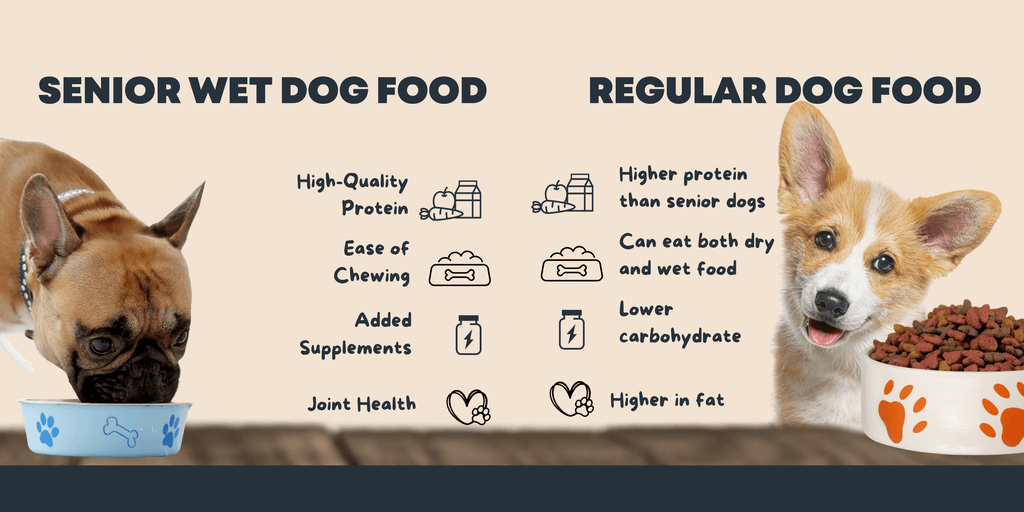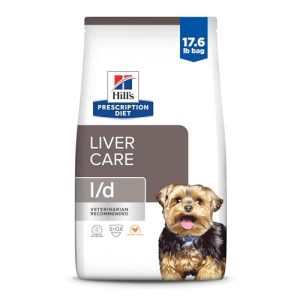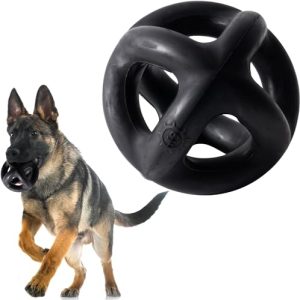Are you wondering when to switch your furry friend from puppy chow to adult dog food? Making this transition at the right time is crucial for your dog’s health and well-being.
As a pet owner, you want to ensure your canine companion gets the nutrition they need to thrive. But how do you know when it’s the right moment? We’ll guide you through the signs and stages that indicate your dog is ready for adult food.
You’ll discover the key factors to consider, ensuring you make the best choice for your beloved pet. Stick around, and you’ll gain the confidence to make this important change, knowing you’re doing what’s best for your four-legged friend.
Growth Stages In Dogs
Dogs grow fast and their food needs change as they get older. Feeding the right food helps them stay healthy. Knowing when to switch to adult food is important for their growth.
Different stages in a dog’s life need different nutrition. Puppies need special food to help their bones and muscles grow strong. Adult dogs need balanced food to keep their energy and health.
Puppy Development Phases
Puppies grow through several phases before they become adults. Each phase has unique needs. Their body develops fast, so they need extra nutrients.
The first phase is from birth to 8 weeks. Puppies rely on their mother’s milk. After this, they start eating solid food. By 6 to 12 months, puppies reach adolescence. Growth slows, and they prepare for adult life.
- Neonatal phase: birth to 2 weeks, feeding on milk only
- Transitional phase: 2 to 4 weeks, start tasting solid food
- Socialization phase: 4 to 12 weeks, rapid growth and learning
- Juvenile phase: 3 to 6 months, increased activity and growth
- Adolescence: 6 to 12 months, nearing adult size
Nutritional Needs By Age
Puppies need food rich in protein and fat. This helps their muscles and energy. They also need vitamins and minerals for bones and teeth.
Adult dogs need less fat but still require balanced nutrition. Switching from puppy food to adult food depends on the breed and size. Large breeds may need puppy food longer than small breeds.
| Age | Nutritional Needs | Food Type |
|---|---|---|
| Birth to 8 weeks | High fat, protein, and antibodies | Mother’s milk or puppy formula |
| 8 weeks to 6 months | High protein and fat for growth | Puppy food |
| 6 to 12 months | Balanced nutrients, slower growth | Transition to adult food |
| 12 months and older | Maintain weight and health | Adult dog food |

Credit: www.pethealthclub.com
Signs Your Dog Is Ready
Knowing when your dog is ready for adult food is important. Dogs change as they grow, and their diet needs to change too. Feeding the right food helps them stay healthy and strong.
Look for clear signs in size, behavior, and teeth to decide the right time to switch. These signs show your dog is ready for adult food.
Changes In Size And Weight
Your dog’s size and weight grow quickly in the first months. When growth slows down, they may be ready for adult food. Most dogs reach their adult size between 9 and 12 months.
- Check if your dog has stopped growing taller.
- Notice if weight gain has slowed or stopped.
- Compare current size to breed growth charts.
Behavioral Indicators
Behavior changes can show readiness for adult food. Puppies may start to eat less often but larger meals. They might also show more independence during feeding time.
| Behavior | What It Means |
| Eating less often | Needs fewer meals, more adult-style feeding |
| Chewing less on toys | Teething phase may be ending |
| More self-control | Ready for a more mature diet |
Dental Development
Your dog’s teeth are a good sign of maturity. Puppies lose their baby teeth and grow adult teeth between 4 and 7 months old. When all adult teeth are in, your dog can eat adult food safely.
Look for these dental signs:
- All baby teeth have fallen out.
- Adult teeth are fully grown and clean.
- No signs of teething pain or swelling.
Choosing The Right Adult Food
Dogs need adult food once they finish growing. Feeding the right food helps them stay healthy and active.
Adult food has different nutrients than puppy food. It matches their slower growth and energy needs.
Nutritional Differences
Adult dog food has fewer calories than puppy food. It helps keep a healthy weight as dogs grow older.
It also has balanced protein and fat. This supports muscles without adding extra energy for growth.
- Lower calories to prevent weight gain
- Moderate protein for muscle maintenance
- More fiber to support digestion
- Added vitamins for overall health
Special Diets And Considerations
Some adult dogs need special diets. These diets help with allergies, sensitivities, or health issues.
Talk to a vet to find the best food for your dog’s needs. Some may need grain-free or low-fat options.
- Grain-free food for dogs with allergies
- Low-fat food for overweight dogs
- High-fiber food for better digestion
- Prescription diets for medical conditions

Credit: us.eukanuba.com
Transitioning To Adult Food
Changing your dog’s diet to adult food is important as they grow. This switch helps meet their new nutritional needs.
Making the change carefully can keep your dog healthy and happy during this time.
Gradual Food Changes
Switch your dog’s food slowly over 7 to 10 days. Mix small amounts of adult food with puppy food. Increase adult food amount each day.
- Day 1-3: 25% adult food, 75% puppy food
- Day 4-6: 50% adult food, 50% puppy food
- Day 7-9: 75% adult food, 25% puppy food
- Day 10: 100% adult food
Monitoring Digestive Health
Watch your dog’s digestion during the food change. Look for signs like loose stools or vomiting. These can mean the food change is too fast.
| Sign | What to Do |
| Loose stools | Slow down the food change |
| Vomiting | Stop adult food and consult a vet |
| Normal stools | Continue gradual transition |
Common Mistakes To Avoid
Feeding your dog the right food at the right time is very important. Many dog owners make mistakes that can harm their pet’s health.
Learn about common errors to avoid when switching your dog to adult food. This helps keep your dog healthy and happy.
Overfeeding And Obesity
Giving your dog too much food can lead to obesity. Overweight dogs face serious health problems and may have shorter lives.
- Feed the amount recommended on the food package or by your vet.
- Watch your dog’s weight regularly to spot any gain early.
- Limit treats and snacks to avoid extra calories.
- Provide regular exercise to keep your dog fit.
Ignoring Breed-specific Needs
Different dog breeds need different nutrition. Small breeds, large breeds, and active dogs all have unique needs.
| Breed Type | Food Considerations |
| Small Breeds | High calorie, small kibble size |
| Large Breeds | Joint support, controlled calories |
| Active Dogs | More protein and energy |
| Senior Dogs | Lower calories, added supplements |
Veterinary Guidance And Support
Knowing when to switch your dog to adult food is important for its health. Your veterinarian can guide you through this change safely.
Veterinarians help check your dog’s growth and recommend the best diet for their needs.
Regular Health Checkups
Regular vet visits help track your dog’s growth and health. These visits show if your dog is ready for adult food.
Vets check weight, teeth, and energy levels. These signs tell if the dog needs more or less nutrition.
- Monitor weight gain or loss
- Check development of teeth
- Observe activity and energy levels
- Detect any health problems early
Professional Dietary Advice
Vets give advice on the right food type and amount for your dog’s age and breed. This helps avoid feeding mistakes.
They recommend food that supports your dog’s growth and keeps them healthy as adults.
- Choose food based on age and size
- Adjust portions to avoid weight issues
- Include special nutrients if needed
- Follow vet’s feeding schedule recommendations

Credit: www.petsmart.ca
Frequently Asked Questions
When Should Puppies Switch To Adult Dog Food?
Puppies typically switch to adult dog food between 9 and 12 months. Large breeds may take longer, up to 18 months. This ensures proper growth and nutrition balance for their changing needs.
What Are Signs My Dog Needs Adult Food?
Signs include slowed growth, reduced energy needs, and weight stabilization. Puppies losing interest in puppy food or gaining excess weight also indicate it’s time to switch.
Can I Feed Adult Food To A Puppy?
Feeding adult food to puppies is not recommended. Adult food lacks essential nutrients for growth. Puppies need higher protein and calorie content for healthy development.
How Does Adult Dog Food Differ From Puppy Food?
Adult dog food contains fewer calories and different nutrient ratios. It supports maintenance rather than growth. Puppy food is richer in protein, fat, and vitamins for development.
Conclusion
Choosing the right time to switch your dog to adult food is important. Puppies grow fast and need special nutrients. Once they reach about one year old, adult food suits them better. Watch your dog’s size and energy to know when to change.
Healthy food helps keep your dog strong and happy. Always check with a vet if you are unsure. Feeding adult food too early or late can cause problems. Give your dog the nutrition it needs to thrive every day. Simple steps lead to a healthier, happier pet.

Emily Barker is the founder of ChillDogLife.com, a space dedicated to helping pup parents discover the best dog products, lifestyle tips, and cozy ideas for happier homes.
A lifelong dog lover, Emily combines her passion for pets with a knack for research to share trusted recommendations on everything from toys and furniture to health and everyday care.
Her goal is simple: to make life easier, stylish, and more joyful for dogs and the people who love them.







